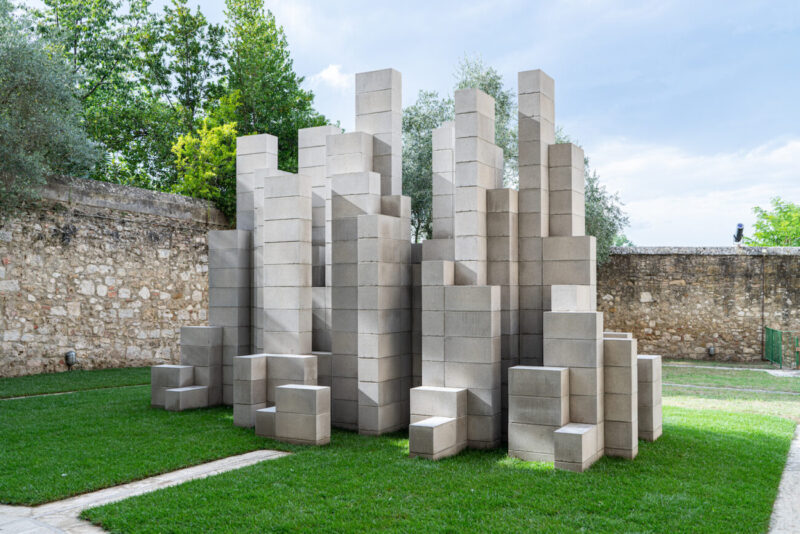For more than two decades, with the Arte all’Arte (Art to Art) project, the Arte Continua Association has been bringing contemporary art inside the lives of every citizen
Talk with Mario Cristiani
For 32 years, Associazione Arte Continua regularly organize public art initiatives involving artists from the international art community, with a specific focus on local communities and small territories. Associazione Arte Continua is a nonprofit organization that manages to implement public art activities, triggering local development processes and creating social and cultural connections. The Association’s driving force is the aim to create, both in small towns and cities, always in collaboration with local communities and institutions, a point of balance between city and countryside and to produce new links between art, architecture and landscape. The final goal is to restore the art central role for the creation of cities identities.
Collectible Dry: 25 years of Arte all’Arte: a project that you launched in order to spread contemporary art democratically. How did this project come about and how do you think it can evolve in the future?
Mario Cristiani: The attempt is to give continuity to Western cultural heritage, that has always been marked by the presence of what we usually call “art cities”. In the past, every city was characterized by a specific form of art. This is a tradition that comes from the ancient ages. The question we sought an answer to is: how was this possible, and why could it not happen today? The question has been – and continues to be – why it doesn’t happen today and what are the conditions for re-engaging a dialogue between art and citizens. The first project was born in order not to drop the baton that we felt we had left with Luciano Pistoi and to continue, always with him by our side, in the cities of the future.
CD: This project seems to respond to an urgency, namely the constant need to offer people the tools to face the reality around us. Do you think the artworks that have been installed within the various urban realities are able to meet these needs? Then again, contemporary art today is precisely meant to provoke doubts, to give rise to spaces for dialogue…
MC: Yes, the project was born in ’94 and it was first realized in ’96 to enable local communities to be culturally prepared to face globalization and also to stimulate artists from the international art community to dialogue with artists who were the protagonists of the first modernization. A two-way dialogue, born out of a redefinition of the city/country relationship to overcome the idea of the peripheralization. Subsequently, it was a project to reflect about what is produced today for the future generations.
CD: Despite ever-increasing communication capabilities, contemporary art installations are often looked upon with distrust. According to Arte Continua Association, how is it possible to overcome these distrusts and find a shared point between the artworks and the public?
MC: We have tried to overcome this unbelief by looking at the city from the outside. We tried to re-discover and to share the quality food of these territories. We have also arranged a meet-ups between the artists of Arte all’Arte and artisans from local communities. We organized meetings at the openings and presentations of the projects abroad, hosted by Italian cultural institutes all over the world. Of course, we involved curators, press offices, and from this year we will start art education projects.
CD: Arte all’Arte seems to be resuming some exhibition modes of the 1960s and 1970s. I’m thinking of Campo Urbano or the 1962 edition of the Festival dei Due Mondi in Spoleto. Perhaps an attempt to rethink the past in order to write the coordinates of the future?
MC: No, the question is not just to instal artworks but to rethink the human-universe relationship through and from the art of the international community: the need to rethink how and where we live in relation to other living beings and the rest of the universe near and far in which our lives take place.






